September 05: Switzerland is famous for excellent watches, chocolates and even cheeses but it makes very interesting and high quality wines as well, Pinot Noir being the most important variety along with the local varietal Chasselas also known as Fendant, being the most grown varietals, writes Subhash Arora who had an opportunity to taste several local wines recently on and off the judging table at Mondial du Pinot Noir.
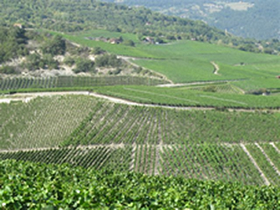 As you alight the Swiss Airlines plane at Zurich, you are greeted by several impressive ads by watch companies- not only the likes of Rolex, Omega and Carl F Bucherer but a host of names that sound unfamiliar and reminiscent of unpronounceable premium French wine labels. The picture shots of elegant and complex watches have no scantily clad women to tempt you. There are cheeses and chocolates galore with a few display boards too but if someone asked you there if Swiss also made wine, your answer would be an uncertain no unless you have been pre-warned that it is a trick question. As you alight the Swiss Airlines plane at Zurich, you are greeted by several impressive ads by watch companies- not only the likes of Rolex, Omega and Carl F Bucherer but a host of names that sound unfamiliar and reminiscent of unpronounceable premium French wine labels. The picture shots of elegant and complex watches have no scantily clad women to tempt you. There are cheeses and chocolates galore with a few display boards too but if someone asked you there if Swiss also made wine, your answer would be an uncertain no unless you have been pre-warned that it is a trick question.
It’s only when you enter any of the 26 cantons (independent Federal states like in India-each having several small districts) of Switzerland- that you come to know that all but one of these 26 ‘states’, Uri, produce wine in howsoever small quantities, using at least one out of 160 grape varieties, majority of them being local varietals. Biggest of these areas is Valais which I visited on my trip, Sierre being the wine Capital.
The country is a relatively small producer and makes wines consumed mostly within the country. Most vines being on the mountains and slopes, it is expensive to tend to the vines and grapes and the resultant wines are thus expensive. According to the statistics released by OIV-Organisation of International Vines and Wines, the country had 14,820 hAs of vines in 2009 which represent barely 0.2 percent of world vineyards. (To put things in correct perspective, India had about 3,500 hAs of planted vineyard in 2009, around half of which may have been uprooted during the last couple of years because of a fall in demand due to recession.
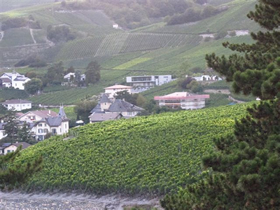 Swiss wine regions are divided broadly in six parts. Valais, in the southern part has slightly over 5000 hAs of vineyards. Vaud, on the south west side of Switzerland, north of Geneva has around 3900 hA whereas the Italian speaking canton of Ticino has around 1100 hA. Three Lakes Region which includes the popular Neuchatel is also an important region besides, the German speaking region north of Zurich and spreading to Basel on one side and Frauenfeld on the right, bordering Germany has 18% of the plantation. Geneva is considered a separate wine region. Swiss wine regions are divided broadly in six parts. Valais, in the southern part has slightly over 5000 hAs of vineyards. Vaud, on the south west side of Switzerland, north of Geneva has around 3900 hA whereas the Italian speaking canton of Ticino has around 1100 hA. Three Lakes Region which includes the popular Neuchatel is also an important region besides, the German speaking region north of Zurich and spreading to Basel on one side and Frauenfeld on the right, bordering Germany has 18% of the plantation. Geneva is considered a separate wine region.
Many people would be surprised to know that the famous Rhone Valley of France has an equivalent in Switzerland since the Rhone river has its source in the Swiss Alps from where it flows through Valais and going through Lake Geneva it travels into France from the city of Geneva and travels through cities like Lyon before ending up in the mouth in the Mediterranean sea, South of France. This is not only one of the most important regions but also a very important source for quality wines.
Swiss local grapes
Although Pinot Noir is the queen of grapes with Gamay (the grape of Beaujolais), Shiraz and Merlot forming around 80% of the total red grapes grown in Switzerland, there are a host of indigenous varieties like Gamaret, Humagne Rouge, Cornalin ( a cross- similar to Humagne, (Diolinoir- some of them are interesting crosses typical of the country. Reds are planted more in Switzerland. Around 58% of all grapes are red-more or less the same as in India.
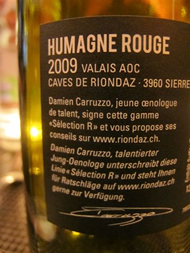 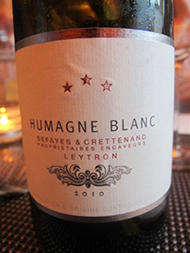 Chasselas is the king of white grapes in this country, with 60-65% of all white production being this indigenous varietal. Known as Fendant in Valais, it is the ubiquitous varietal that has over 200 names in different parts of the world and is also grown in Germany, France, New Zealand, Australia and USA etc but in much smaller proportion. It makes full bodied and fruity wine both in dry and sweet version either of which would be a very good match for a wide array of Indian dishes-including chicken, fish and vegetarian though it is refreshing and crisp enough to be an aperitif wine too. But it is a perfect mate for cheese fondue and Raclette which are simple, yet eloquent preparation, bringing out different flavours from several small producing areas. Interestingly, one side of the river is excellent for grapes due to the south facing position, while the other side is good for cow grazing, making delicious cheeses possible with different characteristics in different cheese villages. Chasselas is the king of white grapes in this country, with 60-65% of all white production being this indigenous varietal. Known as Fendant in Valais, it is the ubiquitous varietal that has over 200 names in different parts of the world and is also grown in Germany, France, New Zealand, Australia and USA etc but in much smaller proportion. It makes full bodied and fruity wine both in dry and sweet version either of which would be a very good match for a wide array of Indian dishes-including chicken, fish and vegetarian though it is refreshing and crisp enough to be an aperitif wine too. But it is a perfect mate for cheese fondue and Raclette which are simple, yet eloquent preparation, bringing out different flavours from several small producing areas. Interestingly, one side of the river is excellent for grapes due to the south facing position, while the other side is good for cow grazing, making delicious cheeses possible with different characteristics in different cheese villages.
Other interesting wines are Humagne Blanc (one needs to get used to the flavour), Heida (also known as Savagnin Blanc or Paien), the pleasant Johannisberg (Sylvaner), Mueller Thurgau and of course the international varieties like Pinot Gris, Riesling etc. Petite Arvine also makes delicious white wine, quite popular in Valais. Another local grape Amigne makes flavourful dry wine but an amazing late harvest Amigne de Vétroz sweet wine. There are several other varietals that make tasting the domestic Swiss wine an interesting experience for a wine connoisseur or a tourist.
Wish list- Lavaux Vineyard Terraces-
Vineyards in the Swiss Alps make a beautiful sight for a non wine drinker too. But, the Unesco World heritage vineyards since June 2007, the 800 hA Lavaux terraced vineyards stretching for about 30 km along the south-facing northern shores of Lake Geneva to the eastern outskirts of Lausanne in the Vaud region offer a truly magnificent view. This region should be on the wish list of any one even vaguely curious about wine. The present vine terraces on slopes can be traced back to the 11th century and produce highly valued wine.
http://whc.unesco.org/en/list/1243
Winery visited: Rouvinez Vins
www.rouvinez.com
Owner: Dominique and Jean Bernard Rouvinez
info@rouvinez.com
It was a pleasure to visit the winery on the hillside named as Colline de Géronde, near River Rhone in Sierre- a part of the Rhone 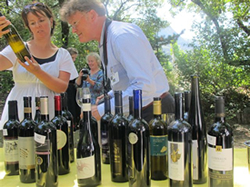 Valley. It is owned by the two brothers Dominique Rouvinez who is also the Vice President of the VINEA Association and his brother Jean-Bernard. Latter’s daughter Véronique is a winemaker and was a taster on the last day of judging at Mondial du Pinot Noir despite her being in a family way, highlighting the fact that the wine producers are very practical in handling wine in a responsible way. Valley. It is owned by the two brothers Dominique Rouvinez who is also the Vice President of the VINEA Association and his brother Jean-Bernard. Latter’s daughter Véronique is a winemaker and was a taster on the last day of judging at Mondial du Pinot Noir despite her being in a family way, highlighting the fact that the wine producers are very practical in handling wine in a responsible way.
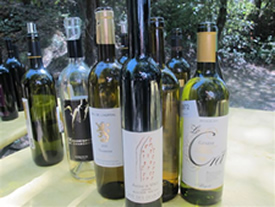
The family owned business owns about 87 hAs and is considered a fairly large sized winery. They are known to have different vineyards with a collection of different vines and their continued efforts to collect suitable varieties. They are pretty much well spread out throughout Valais. A couple of years ago the winery was refurbished and given modern look to encourage wine tourism. A big-size lawn overlooking the valley at the back of the winery –accessible through the beautiful Cellar and a collection of various soils and rocks of the different wine regions is an ideal place to taste their wines or have any tasting picnics- the kind we had at one of the lunches.
Heida, Cornalin Montibeux and Petite Arvine Chateau Lichten are some of the interesting wines made from the local grapes although Pinot Noir is an important wine for the company. A Tasting of around 50 wines, with lunch in the lawns this afternoon could convert many non-drinkers e into drinking wines. |